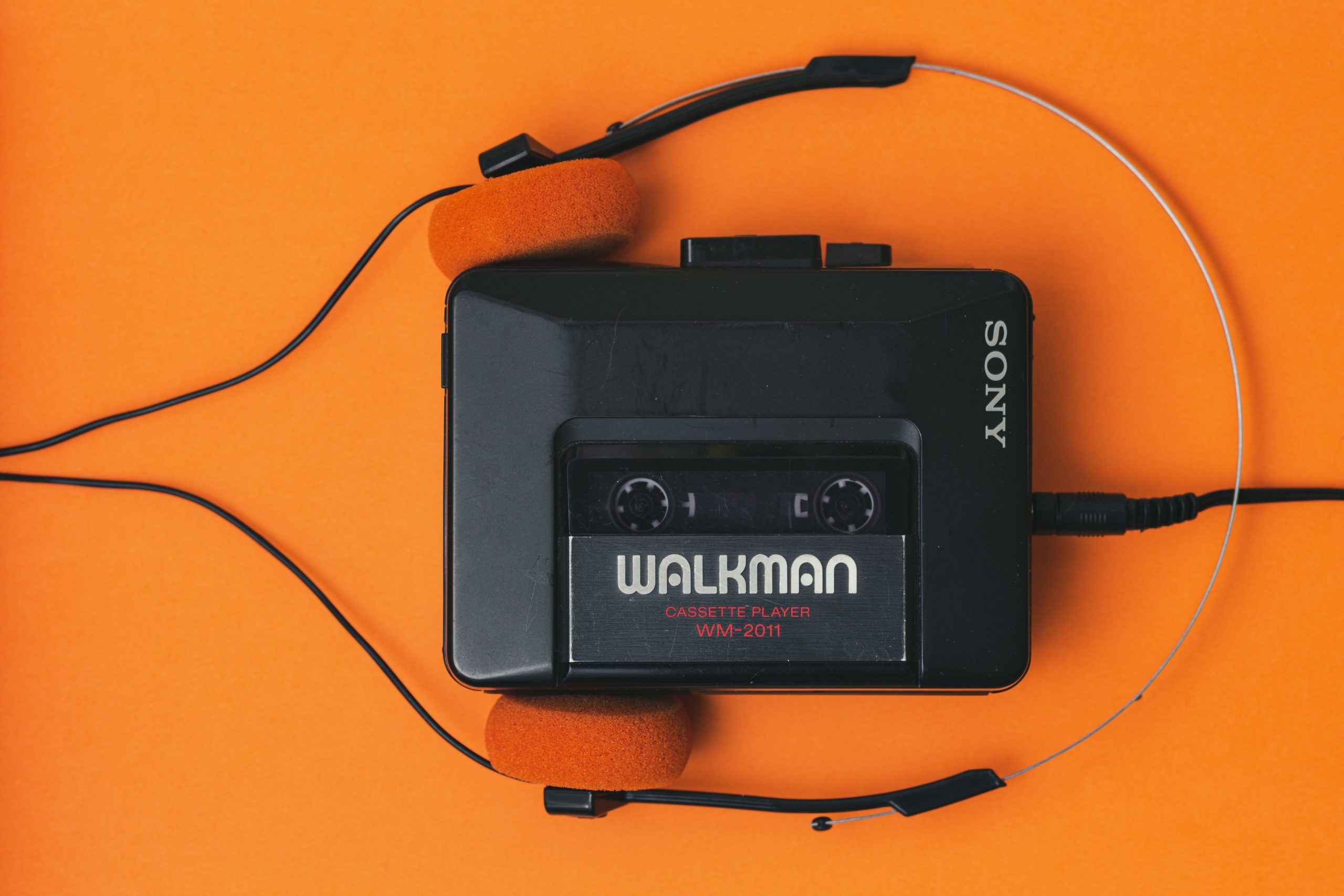Home>Production & Technology>Digital>What Are Three Negatives That The Invention Of Digital Music Created


Digital
What Are Three Negatives That The Invention Of Digital Music Created
Published: March 10, 2024
Discover the downsides of the digital music revolution and its impact on the industry and listeners. Explore the negative effects of digital music on quality, ownership, and artist compensation.
(Many of the links in this article redirect to a specific reviewed product. Your purchase of these products through affiliate links helps to generate commission for AudioLover.com, at no extra cost. Learn more)
Loss of Physical Ownership
The advent of digital music has revolutionized the way we consume and interact with music. With the rise of digital platforms and streaming services, the traditional concept of physical ownership of music has undergone a significant transformation. In the past, music enthusiasts cherished the tangible experience of owning physical copies of their favorite albums, whether in the form of vinyl records, CDs, or cassette tapes. However, the digital era has ushered in a new paradigm, leading to a gradual decline in the significance of physical ownership.
Disconnection from Tangible Media
In the bygone era, music aficionados took pride in amassing a collection of physical music albums, each representing a cherished memory or a musical journey. The act of browsing through record stores, carefully selecting an album, and holding it in one's hands fostered a profound connection between the listener and the music. The tangible nature of physical media imbued a sense of ownership and nostalgia, creating a unique bond between the individual and the music they held in their hands.
Shift to Digital Intangibility
In stark contrast, the digital age has redefined the concept of music ownership, rendering it intangible. The transition from physical formats to digital files has detached listeners from the tactile experience of owning music. With the click of a button, entire music libraries can now be stored on digital devices or accessed through streaming services, eliminating the need for physical space to house music collections. This shift has altered the way individuals perceive and value their music, as the emotional connection once derived from physically owning an album has been replaced by the convenience of digital access.
Impact on Music Appreciation
Moreover, the loss of physical ownership has implications for the appreciation of music as an art form. The act of holding an album cover, examining the artwork, and reading the liner notes contributed to a holistic sensory experience that complemented the auditory enjoyment of the music itself. In contrast, digital music consumption often prioritizes convenience and accessibility over the immersive experience of engaging with physical media. As a result, the depth of connection between the listener and the music may be compromised in the absence of tangible, tactile interaction.
In essence, the shift from physical ownership to digital access has transformed the way individuals relate to and appreciate music. While digital music offers unparalleled convenience and accessibility, it has also led to the erosion of the tangible connection and sensory experience associated with physical ownership. As the digital landscape continues to evolve, it is essential to recognize and preserve the unique value that physical ownership once brought to the realm of music consumption.
Decrease in Sound Quality
The advent of digital music has undeniably revolutionized the way we access and enjoy our favorite tunes. However, this transformation has not been without its drawbacks, particularly in terms of sound quality. The shift from physical formats to digital files, often compressed for storage and streaming, has led to a noticeable decrease in the fidelity and richness of sound experienced by listeners.
In the analog era, music aficionados reveled in the warmth and depth of sound produced by vinyl records and high-quality audio cassettes. The analog format preserved the nuances and intricacies of musical compositions, offering a rich and immersive listening experience. However, with the transition to digital music, the audio landscape underwent a significant change. Digital compression techniques, such as MP3 and AAC, were introduced to reduce file sizes and enable efficient streaming and storage. While these methods facilitated the widespread dissemination of music, they also resulted in a loss of audio data, leading to a perceptible decline in sound quality.
The process of digital compression involves discarding certain audio frequencies and details that are deemed less perceptible to the human ear. While this approach effectively reduces file sizes, it also compromises the overall fidelity and authenticity of the music. As a result, listeners may encounter diminished clarity, reduced dynamic range, and a loss of sonic depth when compared to the analog counterparts. The intricate nuances of instruments, the subtleties of vocal performances, and the spatial dimension of soundscapes may be compromised in the digital realm, impacting the overall listening experience.
Furthermore, the proliferation of low-quality digital audio sources, such as unauthorized downloads and substandard streaming services, has exacerbated the issue of sound quality degradation. These sources often feature heavily compressed files with noticeable artifacts and distortion, further detracting from the original sonic integrity of the music.
Despite these challenges, advancements in digital audio technology, such as high-resolution audio formats and lossless compression techniques, have sought to address the issue of sound quality degradation. These developments aim to deliver audio experiences that closely mirror the fidelity and richness of analog recordings, catering to the discerning ears of audiophiles and music purists.
In essence, while digital music has democratized access to a vast array of musical content, it has also brought about a discernible decrease in sound quality. As the digital landscape continues to evolve, it is imperative to prioritize the preservation and enhancement of sound fidelity, ensuring that listeners can fully appreciate the depth and richness of the music they cherish.
Impact on Artist Revenue
The advent of digital music has ushered in a new era of music consumption, offering unprecedented accessibility and convenience to listeners worldwide. While this digital revolution has empowered artists to reach a global audience with greater ease, it has also significantly transformed the landscape of artist revenue generation. The shift from physical sales to digital distribution and streaming platforms has introduced a complex interplay of opportunities and challenges for musicians and creators, ultimately shaping the financial dynamics of the music industry.
Evolution of Revenue Models
In the traditional model of music distribution, artists relied heavily on revenue streams derived from physical album sales and royalties from radio airplay. However, the digital age has redefined the means through which artists monetize their craft. With the rise of digital platforms, artists now have the opportunity to leverage diverse revenue streams, including digital downloads, streaming royalties, and online merchandise sales. This evolution has expanded the avenues through which artists can generate income, offering a more diverse and dynamic revenue landscape.
Impact of Streaming Platforms
While digital streaming platforms have democratized access to music for consumers, they have also introduced a paradigm shift in the way artists earn revenue. The transition from album sales to streaming has raised pertinent questions regarding the equitable compensation of artists. Streaming services often operate under complex royalty structures, where artists receive fractions of a cent per stream. This model has sparked debates surrounding fair compensation, particularly for independent and emerging artists who may struggle to accrue substantial earnings from streaming alone.
Challenges for Emerging Artists
For emerging artists, the digital landscape presents both opportunities and challenges in revenue generation. While digital platforms offer unprecedented exposure and the potential for viral success, the monetization of music remains a multifaceted endeavor. Emerging artists may encounter hurdles in navigating the intricacies of digital distribution, understanding royalty structures, and effectively monetizing their content. As a result, many artists find themselves grappling with the need to diversify their revenue streams beyond music sales, often turning to live performances, merchandise sales, and crowdfunding to sustain their musical pursuits.
Piracy and Unauthorized Distribution
The proliferation of digital music has also brought to the forefront the issue of piracy and unauthorized distribution, posing a significant threat to artist revenue. Illicit sharing of music files and unauthorized downloads have the potential to deprive artists of rightful earnings, undermining the value of their creative output. While digital rights management and anti-piracy measures aim to mitigate these challenges, the battle against unauthorized distribution remains an ongoing concern for artists seeking to protect their intellectual property and secure their financial interests.
The Path Ahead
As the music industry continues to adapt to the digital landscape, the quest for equitable artist compensation remains a focal point. Efforts to reform royalty structures, enhance transparency in revenue reporting, and combat piracy are pivotal in safeguarding the financial well-being of artists. Additionally, the diversification of revenue streams, strategic utilization of digital platforms, and the cultivation of direct fan engagement are integral to empowering artists to thrive in the digital age. By embracing innovative business models and advocating for fair compensation, the music industry can foster an environment where artists can sustainably monetize their creativity and contributions, ensuring a vibrant and thriving ecosystem for musical expression.
In essence, the impact of digital music on artist revenue is a multifaceted narrative, characterized by evolving revenue models, streaming dynamics, challenges for emerging artists, and the ongoing battle against piracy. As the industry navigates these complexities, the pursuit of equitable compensation and sustainable revenue generation remains a cornerstone in supporting the artistic endeavors of musicians in the digital era.











